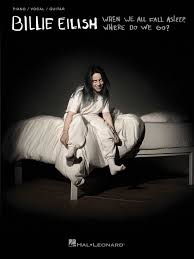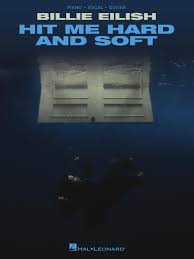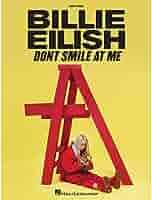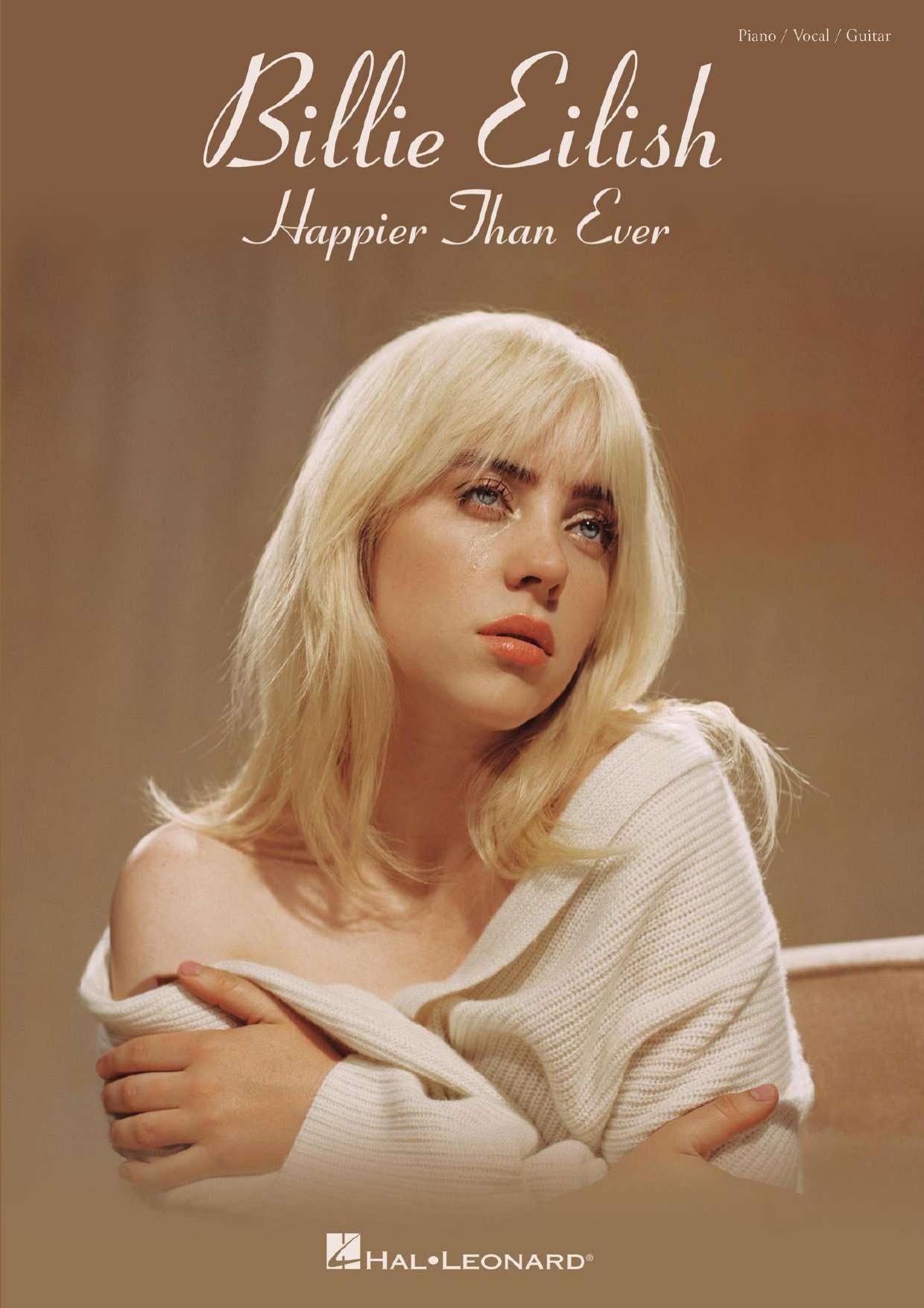Table of Contents
Come join us now, and enjoy playing your beloved music and browse through great scores of every level and styles!
Can’t find the songbook you’re looking for? Please, email us at: sheetmusiclibrarypdf@gmail.com We’d like to help you!

Best Sheet Music download from our Library.
Billie Eilish: The Whisper That Shook the World – A Deep Dive into an Iconoclast’s Artistry
Billie Eilish Pirate Baird O’Connell isn’t just a pop star; she’s a cultural phenomenon, a generational voice, and a sonic architect who dismantled the predictable scaffolding of mainstream pop music. Emerging from the confines of her childhood bedroom, crafted in intimate collaboration with her brother Finneas O’Connell, Billie forged a sound and aesthetic so distinct, so hauntingly personal, that it resonated with millions worldwide, capturing the anxieties, darkness, and quiet resilience of Gen Z. This article delves deep into her biography, musical DNA, innovative production, harmonic language, profound influences, burgeoning legacy, extensive works, filmography, discography, and most iconic compositions.





Browse in the Library:
Or browse in the categories menus & download the Library Catalog PDF:
I. Biography: Bedroom Beginnings to Global Stardom
Born December 18, 2001, in Los Angeles, California, Billie Eilish was raised in a household steeped in creativity. Her parents, Maggie Baird (an actress and teacher) and Patrick O’Connell (an actor and carpenter), encouraged artistic expression. Both Billie and her older brother, Finneas, were homeschooled, allowing flexibility to pursue music, acting, and dance. Billie was a competitive dancer until a hip injury at 13 forced her to stop. This pivotal moment redirected her energy towards singing and songwriting, activities she and Finneas had already begun exploring casually in their Highland Park home.
The genesis of her career is now legendary. In 2015, Finneas, already active in music with his band The Slightlys, wrote a song called “Ocean Eyes” originally intended for his band. He asked the 13-year-old Billie to record a vocal demo so he could send it to his dance teacher for choreography. They uploaded the track to SoundCloud for easy sharing, labeling it as a “demo.” The haunting beauty of Billie’s ethereal, yet mature, voice over Finneas’s sparse, atmospheric production struck an immediate chord. It went viral organically. Record labels took notice, and by late 2016, Billie had signed with Darkroom/Interscope Records.
Her debut EP, don’t smile at me, released in 2017, solidified her unique identity. Tracks like “bellyache,” “idontwannabeyouanymore,” and “watch” showcased a darkly humorous, introspective, and sonically adventurous artist far removed from the bubblegum pop dominating the charts. The world was captivated by the juxtaposition: a teenager singing about death, depression, and detachment with an almost unnerving calm, wrapped in minimalist, bass-heavy soundscapes.
Please, subscribe to our Library.
If you are already a subscriber, please, check our NEW SCORES’ page every month for new sheet music. THANK YOU!
Her meteoric rise continued with her debut studio album, WHEN WE ALL FALL ASLEEP, WHERE DO WE GO? (2019). It was a cultural earthquake. Fueled by the global megahit “bad guy,” the album debuted at number one in the US and UK, making Billie the first artist born in the 21st century to have a number-one album. It swept the 2020 Grammy Awards, winning Album of the Year, Record of the Year (“bad guy”), Song of the Year (“bad guy”), and Best New Artist – a feat only matched once before (Christopher Cross in 1981). At 18, she became the youngest artist ever to achieve this.
Her second studio album, Happier Than Ever (2021), marked a significant evolution. Moving away from the overt darkness of her debut, it explored themes of fame, scrutiny, relationships, and self-discovery with greater nuance and sonic maturity. While retaining the core intimacy of her sound, it incorporated elements of jazz, bossa nova, and rock, showcasing her expanding vocal range and lyrical depth. It too debuted at number one globally and earned critical acclaim and Grammy nominations.
Billie’s journey is one of navigating immense fame while fiercely protecting her artistic integrity and mental health. She’s been open about struggles with Tourette syndrome, depression, and the overwhelming pressures of celebrity. Her commitment to environmentalism and sustainability (evident in projects like her 2022 climate action event series “Overheated”) and her advocacy for body positivity (famously rejecting body-shaming norms on red carpets) further define her as an artist deeply engaged with the world beyond music.
II. Music Style & Sonic Architecture: The Finneas Factor
Billie Eilish’s music is impossible to discuss without acknowledging the profound, symbiotic creative partnership with her brother, Finneas O’Connell. He is the primary producer, co-writer, and multi-instrumentalist behind nearly all her work. Their process is uniquely intimate and efficient, largely conceived and recorded in Finneas’s small bedroom studio (and later, home studios), fostering an environment of experimentation and vulnerability.
The hallmark of their style is minimalist maximalism. Tracks are often built on sparse, foundational elements:
- Dominant Basslines: Deep, distorted, often sub-bass frequencies are a signature. It’s not just rhythm; it’s texture, mood, and physical presence (e.g., “bad guy,” “Bury a Friend,” “you should see me in a crown”). This low-end focus creates a sense of claustrophobia, unease, or immense power.
- Skeletal Percussion: Beats are often unconventional, utilizing found sounds, clicks, taps, glitches, and heavily processed electronic elements rather than traditional acoustic drum kits. Think the ASMR-inspired clicks and whispers in “idontwannabeyouanymore,” the distorted kick in “bad guy,” or the trap-influenced skitters in “bury a friend.”
- Atmospheric Textures: Layers of ambient synths, reversed sounds, manipulated vocal samples, and environmental noises create immersive soundscapes. This atmospheric quality evokes specific moods – dread, melancholy, detachment, wonder.
- Billie’s Vocal as Instrument: Billie’s voice is the centerpiece, treated with incredible nuance. She predominantly employs a whisper-sing technique – breathy, intimate, and delivered with remarkable control and phrasing. This creates an immediate sense of closeness and vulnerability. However, she possesses significant range, shifting effortlessly into a powerful, resonant chest voice (“Happier Than Ever,” “Therefore I Am”), a crystalline falsetto (“Ocean Eyes,” “i love you”), or employing guttural effects (“you should see me in a crown,” “Bury a Friend”). Her vocal harmonies, often layered and processed, are crucial melodic and textural elements.
- Genre Fluidity: While rooted in dark pop and alternative electronic, their sound seamlessly incorporates elements of trap, industrial, hip-hop, jazz, bossa nova, folk, and rock. They refuse to be pigeonholed.
III. Improvisational Licks & Vocal Ad-Libs: Studio Craft as Spontaneity
Billie Eilish isn’t known for extended instrumental solos or jazz-style improvisation in the traditional sense. Her “improvisation” manifests differently, primarily in the studio crafting process and in vocal ad-libs and textures:
- Studio Experimentation as Improvisation: The creation process is the improvisation. Finneas and Billie experiment relentlessly with sounds, effects, and arrangements in the moment. A bassline might emerge from manipulating a sample of Billie’s braces clicking (“bad guy”), or a melody might be found by reversing a vocal take. This spontaneous exploration in the studio is foundational to their unique sound.
- Vocal Ad-Libs & Textures: Billie’s vocal performances are rich with subtle improvisations within the framework of the song. Listen closely to:
- Whispered asides and breaths: These aren’t just breaths; they are rhythmic and atmospheric punctuation, often adding layers of meaning or intimacy (“xanny,” “when the party’s over”).
- Harmonic Embellishments: Subtle slides, bends, and variations in pitch on repeated phrases, especially in her head voice/falsetto (“Ocean Eyes,” “i love you”).
- Guttural Effects & Vocal Fry: Used deliberately for emotional impact or menace (“Bury a Friend,” “you should see me in a crown,” the bridge of “bad guy”).
- Layered Counter-Melodies and Harmonies: Often improvised during recording sessions, these layers create complex, shifting vocal landscapes that are integral to the composition (“when the party’s over,” “everything i wanted,” “Happier Than Ever”).
- Wordless Vocalizations: Moans, sighs, hums, and other non-lexical utterances serve as emotional shorthand and textural elements (“Bury a Friend,” “ilomilo”).
- Live Vocal Nuance: While generally faithful to the recorded versions, Billie brings subtle variations in phrasing, dynamics, and ad-libs to her live performances, responding to the energy of the crowd and the moment.
IV. Chord Progressions & Music Harmony: Subverting Pop Expectations
Billie and Finneas possess a sophisticated understanding of harmony, often using it to subvert pop conventions and create distinct moods:
- Embrace of Dissonance & Chromaticism: They aren’t afraid of clashing notes or unexpected chromatic movements to create tension, unease, or sophistication. The outro of “everything i wanted” features dissonant vocal harmonies. The verse of “Bury a Friend” uses unsettling chromatic bass movement.
- Modal Mixture: Frequently borrowing chords from parallel minor or major scales (e.g., using a iv chord from minor in a major key song, or vice versa). This creates ambiguity and richness. “when the party’s over” uses a descending progression (Bm – A – G – F#) that heavily implies minor despite the key center.
- Extended Chords & Jazz Influence: Especially prominent on Happier Than Ever. Tracks like “Billie Bossa Nova,” “GOLDWING,” and the title track “Happier Than Ever” utilize major 7ths, minor 9ths, 6/9 chords, and sophisticated voice leading reminiscent of bossa nova and jazz harmony, adding warmth and complexity.
- Static Harmony & Bass Movement: Often, harmonic interest comes less from complex chord changes and more from the interplay of a relatively static chord or drone with a moving bassline or intricate vocal melody. “bad guy” is essentially built on a single D minor chord with a highly active bassline defining the progression. “bury a friend” revolves around a repeating bass figure with minimal harmonic shift above it.
- Unconventional Cadences: Avoiding predictable perfect cadences (V-I), opting for plagal cadences (IV-I – “amen” cadence), deceptive cadences, or simply letting tension hang unresolved. The ending of “idontwannabeyouanymore” is a prime example of avoiding resolution.
- Bass as Harmonic Driver: As mentioned, the bassline often dictates the harmonic feel more than traditional chord changes, sometimes implying harmony through single-note riffs (“bad guy,” “you should see me in a crown”).
- Use of Less Common Modes: “Bury a Friend” famously centers around the Locrian mode (the 7th mode, characterized by a diminished fifth), notoriously unstable and rarely used in pop, perfectly capturing the song’s unsettling paranoia.
V. Influences: An Eclectic Tapestry
Billie and Finneas cite a remarkably diverse range of influences:
- Hip-Hop & Trap: Tyler, The Creator, Childish Gambino, Earl Sweatshirt, Kendrick Lamar (impacting production styles, rhythmic sensibilities, bass emphasis).
- Alternative & Rock: The Beatles, Green Day, Avril Lavigne, Lana Del Rey, Arctic Monkeys, Linkin Park (songwriting, vocal delivery, attitude, dark aesthetics).
- Electronic & Experimental: Aphex Twin, James Blake, Skrillex, Burial (sound design, textures, glitch elements, atmospheric production).
- Jazz & Standards: Billie Holiday, Frank Sinatra, Julie London (vocal phrasing, intimacy, jazz harmonies – especially evident on Happier Than Ever).
- Film Scores: Hans Zimmer, Danny Elfman (cinematic scope, mood creation, use of tension and release).
- Pop & R&B: Justin Bieber, Amy Winehouse, Lorde (melodic sensibilities, emotional rawness, alt-pop pathfinding).
This eclectic mix explains the genre-blurring nature of their music and their aversion to formula.
VI. Legacy: Redefining Pop and Amplifying a Generation
Billie Eilish’s impact, despite her youth, is undeniable and multifaceted:
- Democratizing Production: Proving that chart-topping, Grammy-winning music could be made authentically in a bedroom studio, inspiring countless young artists.
- Sonic Innovation: Bringing dark, minimalist, bass-heavy, and texturally complex production firmly into the mainstream pop lexicon.
- Authenticity & Vulnerability: Championing lyrical honesty about mental health, depression, anxiety, and teenage angst in a way that deeply resonated with Gen Z, normalizing these conversations.
- Aesthetic Revolution: Establishing a distinct visual identity defined by oversized streetwear (a deliberate rejection of sexualization), dark palettes, and striking, often surreal, imagery in music videos and performances.
- Challenging Industry Norms: From her stance on body image to her sustainability efforts in touring and merchandise, she uses her platform to advocate for change.
- Vocal Style Influence: Her whisper-sing technique and intimate, conversational delivery have been widely emulated by new artists.
She is a defining artist of her generation, capturing its complexities and anxieties with unprecedented artistry and influence.
VII. Works: Beyond Albums
- Songwriting: Billie co-writes all her songs with Finneas. Their songwriting is known for its dark humor, sharp observations, vulnerability, and unique perspectives.
- Visual Arts: Music videos are integral to her art, often directed by herself or collaborators like Megan Thompson or Carlos López Estrada. They are visually stunning, conceptually rich, and extensions of the songs’ narratives.
- Documentary: Billie Eilish: The World’s a Little Blurry (2021, dir. R.J. Cutler) offered an intimate, raw look at her life and the making of WHEN WE ALL FALL ASLEEP… during her meteoric rise. Billie Eilish: Live at the O2 (2023) captured her Happier Than Ever tour.
- Books: Billie Eilish: In Her Own Words (2021) compiled her thoughts, drawings, and photos.
VIII. Filmography (Scoring & Acting)
- No Time To Die (2021): Wrote and performed the theme song for the James Bond film, becoming the youngest artist ever to do so. Won the Academy Award for Best Original Song and a Grammy.
- Barbie (2023): Contributed the poignant ballad “What Was I Made For?” which became a global hit and won the Academy Award and Grammy for Song of the Year.
- Swarm (2023): Made a cameo appearance in the Donald Glover series.
- Saturday Night Live: Hosted and performed twice (December 2019, December 2021).
- Acting: Had minor roles in TV shows like Diary of a Future President (2020) and Swarm (2023). Voiced a character in an episode of The Simpsons (2023).
IX. Discography: A Chronological Journey
- EP: don’t smile at me (2017)
- Key Tracks: “COPYCAT,” “idontwannabeyouanymore,” “my boy,” “watch,” “bellyache,” “Ocean Eyes” (re-release).
- Significance: Established her dark pop sound and lyrical themes. Viral breakout.
- Album: WHEN WE ALL FALL ASLEEP, WHERE DO WE GO? (2019)
- Key Tracks: “bad guy,” “bury a friend,” “when the party’s over,” “wish you were gay,” “all the good girls go to hell,” “ilomilo,” “listen before i go,” “i love you.”
- Significance: Global phenomenon. Defined a generation’s sound. Grammy sweep (AOTY, ROTY, SOTY, Best New Artist).
- Single: “everything i wanted” (2019)
- Significance: Standalone hit exploring fame and sibling bond. Won Grammy for Record of the Year.
- Album: Happier Than Ever (2021)
- Key Tracks: “Getting Older,” “I Didn’t Change My Number,” “Billie Bossa Nova,” “my future,” “Oxytocin,” “GOLDWING,” “Lost Cause,” “Halley’s Comet,” “Not My Responsibility,” “OverHeated,” “Happier Than Ever,” “Male Fantasy.”
- Significance: Mature evolution, exploring fame’s pitfalls, relationships, and self-discovery. Broader sonic palette (jazz, rock, bossa nova). Critical acclaim.
- Single: “What Was I Made For?” (2023) – From Barbie: The Album
- Significance: Global hit, Academy Award and Grammy winner for Song of the Year. Poignant reflection on identity.
- Album: Hit Me Hard and Soft (2024)
- Key Tracks: “LUNCH,” “CHIHIRO,” “BIRDS OF A FEATHER,” “WILDFLOWER,” “THE GREATEST,” “L’AMOUR DE MA VIE,” “THE DINER,” “BITTERSUITE,” “BLUE.”
- Significance: Critically acclaimed return, showcasing artistic growth and confidence. Explores themes of queer identity, desire, obsession, and introspection with sophisticated production and powerful vocals. Debuted #1 globally.
X. Most Known Compositions & Performances
- Compositions: “bad guy,” “Ocean Eyes,” “when the party’s over,” “bury a friend,” “everything i wanted,” “Happier Than Ever,” “What Was I Made For?,” “Therefore I Am,” “idontwannabeyouanymore,” “LUNCH,” “BIRDS OF A FEATHER,” “No Time To Die.”
- Iconic Performances:
- Coachella 2019 (her breakout festival headline moment).
- Grammy Awards performances (notably “when the party’s over” in 2019, “Everything I Wanted” in 2020, “Happier Than Ever” in 2022).
- The Happier Than Ever world tour (2022-2023), lauded for its innovative staging and powerful renditions.
- Oscars 2022 performance of “No Time To Die.”
- Oscars 2024 performance of “What Was I Made For?”.
- Her intimate Tiny Desk Concert (NPR, 2019).
Billie Eilish: The Enduring Whisper
Billie Eilish’s journey is still unfolding, yet her impact is already indelible. She shattered the mold of the teen pop star, replacing manufactured gloss with profound intimacy, sonic experimentation, and unflinching honesty. Her collaboration with Finneas has birthed a unique musical language – a blend of minimalist production, sophisticated harmony, and a voice that can shift from a devastating whisper to a cathartic roar. She speaks for a generation grappling with digital overload, existential dread, and a yearning for authenticity. From the viral bedroom demo of “Ocean Eyes” to the Oscar stage and the sophisticated depths of Hit Me Hard and Soft, Billie Eilish continues to evolve, challenge, and captivate. She is not just a voice of her time; she is an artist reshaping the soundscape of popular music, proving that the quietest whispers can sometimes make the loudest impact. Her legacy lies in her fearless authenticity, sonic innovation, and the profound connection she forges by giving voice to the unspoken complexities of modern life.
